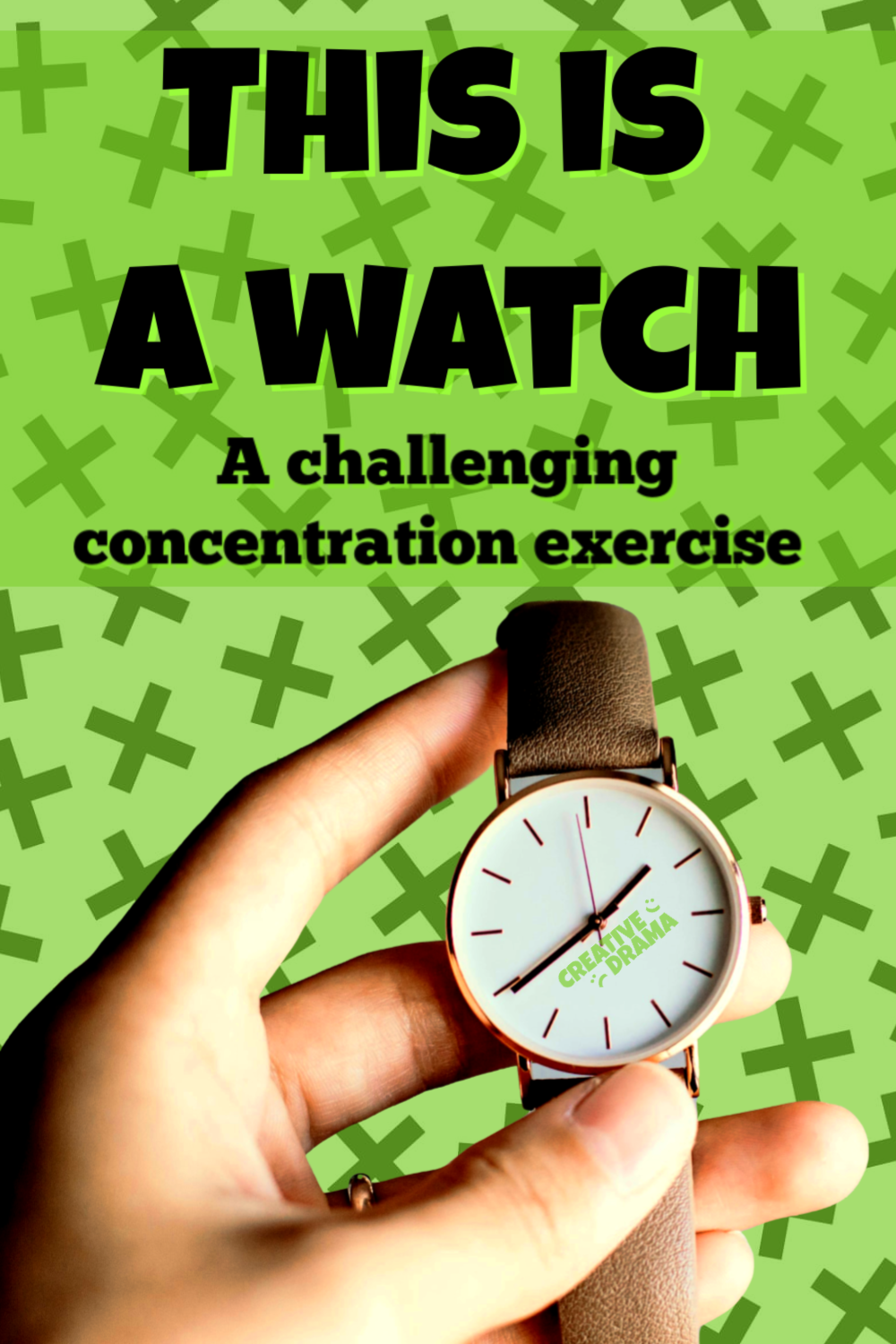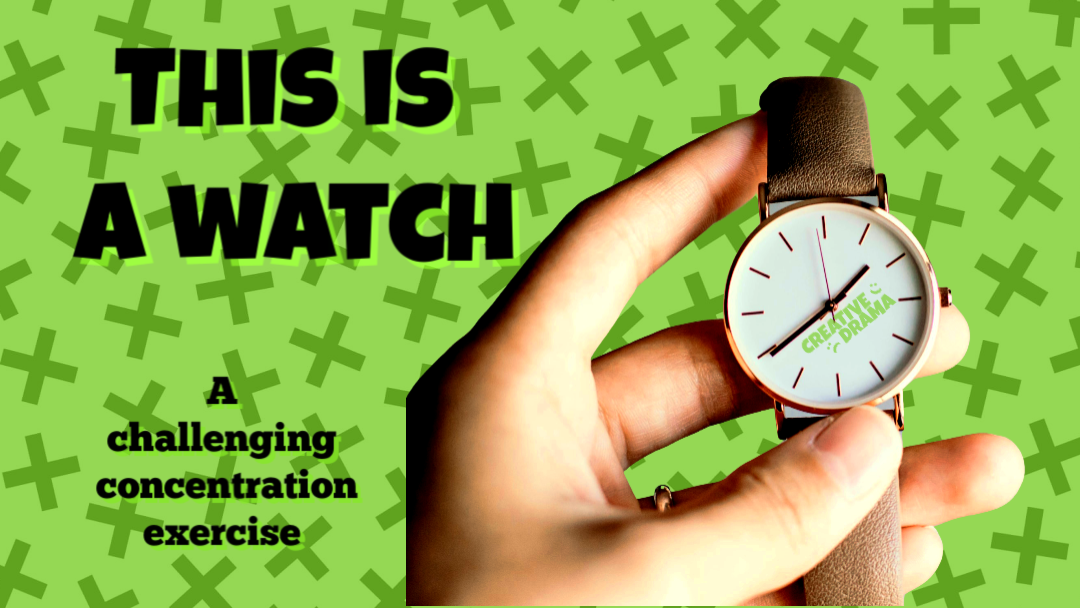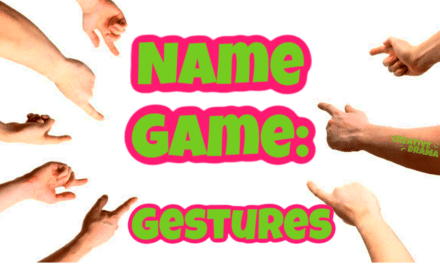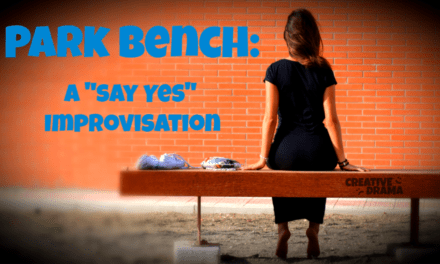“This Is A Watch” is a challenging game that will likely become a favorite in your theatre class.
Overview of Activity: Students memorize the basic “script” and “blocking” for the game, then rehearse until the script runs smoothly. The object of the game is to pass the object or objects around the circle without stopping or breaking the rhythm of the script– eventually, the group should be able to complete a circle in which everyone has an object.
THE BASICS
Game Type: Concentration, Group Cohesion
Theatre Skills Addressed: Line Memorization, Listening, Articulation, Perseverance
Age Range: 5+
Number of Participants: 5-20
Materials: As many one-syllable objects as participants- watch, pen, book, ball, etc.; they should be small enough to pass using one hand, but large enough that two hands could be touching it at the same time.
How to Play:
The participants sit in a circle.
One person has a watch (GIVER), which she will hand over to the person on her right (RECEIVER) once the lines are completed.
The first time, the watch is passed from one person to the next, following the script (see below) until the watch is back at the beginning.
The GIVER has a watch, and turns to the person on her right, the RECEIVER. The RECEIVER puts his hand out for the watch, but does not take it until he says, “Oh, a watch.”
| GIVER: (Offering Watch) This is a Watch. | |
| RECEIVER:( To GIVER) A What? | |
| GIVER:(Replying) A Watch. | |
| RECEIVER:(Repeating) A What? | |
| GIVER: (Replying again) A Watch. | |
| RECEIVER: Oh, A Watch. (Takes Watch) | |
| The RECEIVER now has the watch, and becomes the GIVER with the person to her right, who is now the RECEIVER, and they repeat the same script. | |
It’s important the the RECEIVER take the watch until he says, “Oh, a watch.”
Once everyone knows the lines exactly as written, the group can try two objects!
The person with the watch now becomes the “GIVER and the RECEIVER”. The “GIVER & RECEIVER” again passes the watch to the person on her right (the RECEIVER), but the person her left – the GIVER – passes the GIVER & RECEIVER a pen AT THE SAME TIME that she is handing over the watch to the RECEIVER.
This means that the person with the watch is saying both parts of the script – the GIVER’S and the RECEIVER’S part. The chart below will illustrate.
When there are two objects in the circle, someone is the GIVER and the RECEIVER simultaneously, and must say both sets of lines.
ARROWS indicate to whom the comment is directed.
| GIVER | GIVER & RECEIVER | RECEIVER |
| This is a Pen. ⇒⇒ | This is a Watch. ⇒⇒ | (silence) |
| (silence) | ⇐⇐ A What? | ⇐⇐ A What? |
| A Pen. ⇒⇒ | A Watch. ⇒⇒ | (silence) |
| (silence) | ⇐⇐ A What? | ⇐⇐ A What? |
| A Pen. ⇒⇒ | A Watch. ⇒⇒ | (silence) |
| (silence) | ⇐⇐ Oh, A Pen. | ⇐⇐Oh, A Watch. |
It’s helpful for the person in the “middle” – the GIVER & RECEIVER, to turn her head to the person to whom she’s speaking.
Once the two objects have travelled around the circle successfully, you can try three! That means FOUR people are working with three objects; two of them are simultaneously the GIVER & RECEIVER.
It is best to move from one object to two, then to three, and so on from there. Once the number of successful objects surpasses half of the participants (that is, if you have 12 objects successfully travelling around a group of 20), the group may want to try giving everyone an object.
Advice:
This is not an easy game for everyone to master, but nearly everyone can with some perseverance; I’ve taught this game to hundreds of students. Most likely, some participants will catch on faster than others. You may want to try moving the ones who “get it” into an unbroken sequence within the circle; learning the rhythm is easier when students can hear successful repetitions.
Students may become frustrated with those who are having difficulty with the rhythm, or students who are having difficulty may become frustrated. The younger the participants, the sooner this may happen.
As soon as this occurs, it’s time to say “Well, we have all been working very hard at this game. The next time we try it, maybe we will be able to give everyone an object.” Usually, the participants are eager enough to master the game that they will practice with others until you see them again.
Tips:
- Choose one-syllable objects that can be passed from a single hand to a single hand. Don’t pick anything too heavy or too large.
- Two-syllable objects – a pencil, a laptop, a backpack – will not work in combination with one-syllable objects; they will throw off the rhythm of the game script. Theoretically, a game of “This is a Watch” with all two-syllable objects should work, but I have not tried it!
- It may help to have the lines written on a large piece of paper for visual learners.
- If you have an assistant or two, demonstrate the game with them.
- Playwright Stephen Gregg uses this game to great effect in “This Is A Test” – Here’s a YouTube video of the scene.







